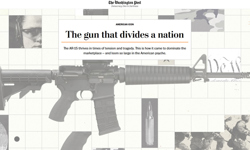I’m not offering a lecture in “told-you-so!” or “hind-sight” strategy. But for the record, I’ve been arguing this point for twenty years.
Now that structural change is affecting us as much as the economic cycle, it is well past the time to “find a new newspaper business model”. This is no longer the motto-du-jour. It’s time to find a whole new business; one that protects and nurtures. Rather than being the only asset, diversification is the route forward. And newspapers have plenty going for them in this.
As the traditional newspaper product fragments, we are going to see the classified and other advertising verticals, migrating into specific branded digital services. Newspapers were slow to realise this trend, but are now, encouragingly, recovering their position. So well-strategised newspaper companies, should look forward to retention of the profits derived from their previous classified activities.
So what are the options and where are the best examples?
In Norway, my favourite newspaper company, Schibsted are also aggressively expanding their activities. Originally a family trust, the company was encouraged onto the stock market, by their recently retired CEO, Kjell Amott, with the provision that the family retains a golden share which guarantees editorial integrity and excellence. The result is an extraordinary, diversified media group, with newspapers at its heart, and interests in a range of classified services, magazines, TV, and software services. Norway is the most successful newspaper market in the world, and Schibsted is by far it’s most dominant player. 50% of their profits come from their digital activities.
Meanwhile JPPolitiken in Denmark, has successfully ventured into book publishing and even branded clothing.
The Daily Mail Group in London, perhaps the most successful newspaper publisher in Europe, today have only half their revenues from newspapers, but they also have interests in financial services products, radio interests in Australia, and are one of the world’s biggest event organisation companies, with 300 major events in 30 countries.
I’ve argued for a long time that newspapers should be moving into below-the-line [BTL] marketing. There is a strong fit with the core business, and has grown from 30 to 70% of total communications expenditure in the last twenty years, and in real terms is growing far faster than the internet. And guess who is benefiting? Our Industry’s master wizard, Rupert Murdoch. The BTL division is small, accounting for only 3% of revenues, but it accounts for 9% profits, over 30% margin.
The Washington Post and Pearson, the owners of the Financial Times, have both successfully moved into Educational Publishing, which is driving their growth and security.
As well as below-the-line opportunities, other obvious areas for development, are locational/contextual marketing, exploiting newspapers traditional local base, market research, and off the page retailing.
The Guardian in the UK and The Irish Times offer one possible solution. As I wrote recently The Scott Trust exists to guarantee the future existence of The Guardian. The Group has expanded dramatically into radio, magazines, digital activities and data services, though it has recently sold its regional newspapers, which were under-performing, and reviewed the future of it’s loss making Sunday newspaper. The Irish Times operates in a similar Trust structure, and it too is seeking to expand its activities in order to protect its core asset.
The idea that newspaper companies could be owned by larger corporations, dedicated to distributing profits to supporting quality news is a very attractive option to me. But it requires two realisations. First, trusts can be dedicated to encouraging quality news and journalism; greedy shareholders cannot. Secondly this process does not necessarily guarantee effectiveness and efficiency. The Guardian and Irish Times, are both truly world class newspapers. But in the case of the Guardian, it employs an implausible number of journalists for its size, and a few years ago the Irish Times brought to its knees, because an editor was given carte blanche to recruit whatever resources he required. It took a brilliant managing director Maeve Donovan, to bring it back to commercial reality from the brink.
There has been talk on Capitol Hill, and the UK parliament, of providing subsidies to newspaper companies, and this is common practice in many European countries. But this would be utterly pointless in the greedy shareholder regime. It may be possible to provide tax breaks for news investment, and trust structures but they would have to be squeaky clean.
But the best solution is for newspaper owners to realise that news is a cherished necessity that can be converted, into an alternative capital generator.
The key lesson from the last twenty years, and the recent horror story, is that debt must only be used to fund real growth, by which I mean top line rather than bottom-line. It can no longer be used to fund acquisition which is subsequently covered up by cost reduction rather than customer expansion. The current figures are distorted because of the recent economic problems. Last time I looked, in the UK at least, there was a direct, correlation between company profitability and circulation decline. In other words the more profits, the faster rate of attrition. The internet is not the cavalry coming any time soon. We have to think NPD.










